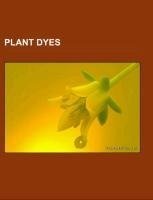
-
 Anglický jazyk
Anglický jazyk
Plant dyes
Autor: Source: Wikipedia
Source: Wikipedia. Pages: 73. Chapters: 1,2,4-Trihydroxyanthraquinone, Alkanna tinctoria, Annatto, Arrabidaea chica, Asperula tinctoria, Baloghia inophylla, Bixa orellana, Bloodroot, Caesalpinia echinata, Catechu, Common Tormentil, Cordeauxia edulis, Cota... Viac o knihe
Na objednávku, dodanie 2-4 týždne
20.59 €
bežná cena: 23.40 €
O knihe
Source: Wikipedia. Pages: 73. Chapters: 1,2,4-Trihydroxyanthraquinone, Alkanna tinctoria, Annatto, Arrabidaea chica, Asperula tinctoria, Baloghia inophylla, Bixa orellana, Bloodroot, Caesalpinia echinata, Catechu, Common Tormentil, Cordeauxia edulis, Cota tinctoria, Cryptocarya alba, Dyewoods, Eucalyptus fibrosa, Filipendula ulmaria, Gardenia jasminoides, Genista tinctoria, Haematoxylum campechianum, Haemodorum coccineum, Henna, Indigofera, Indigofera suffruticosa, Indigofera tinctoria, Indigo dye, Isatis tinctoria, Juglans nigra, Juglans regia, Lincoln green, Lithospermum caroliniense, Maclura tinctoria, Mallotus discolor, Mallotus philippensis, Malva sylvestris, Morinda citrifolia, Morinda tinctoria, Oldenlandia umbellata, Pentaglottis sempervirens, Persian berry, Phytolacca, Pogonolobus, Psorothamnus emoryi, Quercitron, Quercus lusitanica, Quercus velutina, Reseda (plant), Reseda luteola, Rubia, Rubia cordifolia, Rubia tinctorum, Ruellia tuberosa, Safflower, Saw-wort, Tabebuia impetiginosa, Tansy, Taraxacum officinale, Turmeric, Wild Angelica, Wrightia tinctoria. Excerpt: Henna (Lawsonia inermis, also called henna tree) or Hina is a flowering plant, the sole species in the genus Lawsonia in the family Lythraceae. The English name "henna" comes from the Arabic (ALA-LC: ¿inna¿ / pronounced ) or colloquially , loosely pronounced . The name is also used for dye preparations derived from the plant, and for the art of temporary tattooing based on those dyes. Henna has been used since antiquity to dye skin, hair, and fingernails, as well as fabrics including Silk and wool as well as for leather. Additionally, the name is misused for other skin and hair dyes, such as black henna or neutral henna, which are not derived from the plant. Henna is a tall shrub or small tree, 2.6 m high. It is glabrous, multibranched with spine tipped branchlets. Leaves are opposite, entire, glabrous, sub-sessile, elliptical, and broadly lanceolate (1.5-5.0 cm x 0.5-2 cm), acuminate, having depressed veins on the dorsal surface. Henna flowers have four sepals and a 2 mm calyx tube with 3 mm spread lobes. Petals are obvate, white or red stamens inserted in pairs on the rim of the calyx tube. Ovary is four celled, style up to 5 mm long and erect. Fruits are small, brownish capsules, 4-8 mm in diameter, with 32-49 seeds per fruit, and open irregularly into four splits. The henna plant is native to tropical and subtropical regions of Africa, southern Asia, and northern Australasia in semi-arid zones. Henna's indigenous zone is the tropical savannah and tropical arid zone, in latitudes between 15° and 25° N and S from Africa to the western Pacific rim, and produces highest dye content in temperatures between 35 °C and 45 °C. During the onset of precipitation intervals, the plant grows rapidly; putting out new shoots, then growth slows. The leaves gradually yellow and fall during prolonged dry or cool intervals. It does not thrive where minimum temperatures are below 11 °C. Temperatures below 5 °C will kill the henna plant. Small Henna plantHenna has been used since the
- Vydavateľstvo: Books LLC, Reference Series
- Rok vydania: 2013
- Formát: Paperback
- Rozmer: 246 x 189 mm
- Jazyk: Anglický jazyk
- ISBN: 9781156815816


 Nemecký jazyk
Nemecký jazyk 








